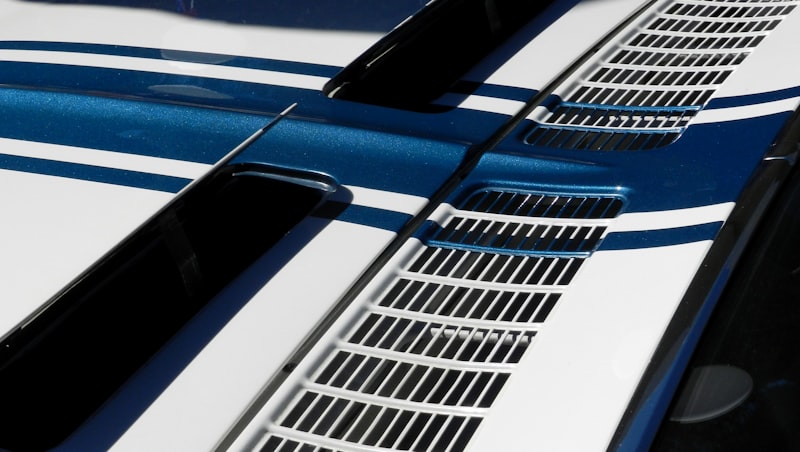The Ford 7.3 Years To Avoid are specific model years of the Ford 7.3-liter Power Stroke diesel engine that have been known to have certain issues and problems. These years should be approached with caution if you’re considering purchasing a vehicle equipped with this engine. Here is a list of the most common problems associated with these years:
- 1999: Injection Driver Module (IDM) Failure
- 2000: Cam Position Sensor Failure
- 2001: Exhaust Back Pressure Valve (EBPV) Malfunction
- 2002: Injector Sleeve O-ring Leaks
- 2003: High-Pressure Oil Pump (HPOP) Failure
- 2004: Turbocharger Failure
- 2005: Stiction Issues in Injectors
- 2006: Engine Oil Cooler Leak
- 2007: EGR Cooler Failure

1999: Injection Driver Module (IDM) Failure
The 1999 Ford 7.3 Power Stroke suffered from Injection Driver Module (IDM) failures. The IDM is responsible for controlling the injectors in the engine, and when it fails, it can cause issues like rough running, misfires, or a complete loss of power. Replacing the faulty IDM is necessary to resolve this problem.
2000: Cam Position Sensor Failure
In the 2000 Ford 7.3 Power Stroke, one common problem was the failure of the Cam Position Sensor. This sensor monitors the position of the camshaft and provides crucial information to the engine control module. When the sensor fails, it can result in rough idling, stalling, or even a no-start condition. Replacing the faulty cam position sensor is required to rectify this issue.
2001: Exhaust Back Pressure Valve (EBPV) Malfunction
The 2001 Ford 7.3 Power Stroke had issues with the Exhaust Back Pressure Valve (EBPV). This valve is designed to regulate exhaust pressure for improved cold starts and faster warm-up times. However, a malfunctioning EBPV can cause excessive exhaust restriction, leading to reduced engine performance, decreased fuel efficiency, and possible turbocharger damage. Repairing or replacing the faulty EBPV is necessary to address this problem.
2002: Injector Sleeve O-ring Leaks
Owners of the 2002 Ford 7.3 Power Stroke often encountered leaks from the injector sleeve O-rings. These O-rings are responsible for sealing the injector sleeves to prevent fuel or oil leaks. When they fail, it can result in leaks that may contaminate the engine’s fuel or lubrication system, leading to potential engine damage or failure. Replacing the faulty O-rings and properly sealing the injector sleeves is vital to resolve this issue.
2003: High-Pressure Oil Pump (HPOP) Failure
The 2003 Ford 7.3 Power Stroke experienced issues with the High-Pressure Oil Pump (HPOP). The HPOP is responsible for supplying high-pressure oil to the injectors, enabling proper fuel delivery and combustion. When the HPOP fails, it can cause symptoms like hard starting, rough running, loss of power, or even a no-start condition. Replacing the faulty HPOP is necessary to address this problem effectively.
2004: Turbocharger Failure
The 2004 Ford 7.3 Power Stroke was prone to turbocharger failures. The turbocharger plays a crucial role in increasing engine power by compressing the incoming air for improved combustion. However, issues such as bearing wear or compressor wheel damage can lead to reduced performance, excessive smoke, or even complete turbocharger failure. Replacing the faulty turbocharger is required to rectify this problem.
2005: Stiction Issues in Injectors
The 2005 Ford 7.3 Power Stroke suffered from stiction issues in the injectors. Stiction refers to the sticking of internal components within the injectors, preventing them from operating correctly. This can result in rough idling, hesitation, decreased fuel efficiency, or even engine misfires. Cleaning or replacing the affected injectors is necessary to address this problem.
2006: Engine Oil Cooler Leak
Owners of the 2006 Ford 7.3 Power Stroke often encountered engine oil cooler leaks. The engine oil cooler is responsible for maintaining optimal oil temperature by cooling the engine oil. A leak in this component can result in oil loss, overheating, and potential engine damage. Repairing or replacing the faulty engine oil cooler is vital to resolve this issue.
2007: EGR Cooler Failure
The 2007 Ford 7.3 Power Stroke had issues with EGR (Exhaust Gas Recirculation) cooler failures. The EGR cooler is designed to reduce emissions by recirculating a portion of the exhaust gases back into the engine. However, a failed EGR cooler can cause coolant leaks, leading to engine overheating, coolant contamination, and potential engine damage. Replacing the faulty EGR cooler is necessary to address this problem effectively.
Important Points to Know
- The Ford 7.3 Years To Avoid are specific model years of the Ford 7.3-liter Power Stroke diesel engine that have known issues and problems.
- Common problems associated with these years include IDM failure, cam position sensor failure, EBPV malfunction, injector sleeve O-ring leaks, HPOP failure, turbocharger failure, stiction issues in injectors, engine oil cooler leaks, and EGR cooler failure.
- These problems can lead to various issues such as decreased performance, engine misfires, fuel leaks, and even engine failure.
- Regular maintenance and proper repairs can help mitigate these issues and ensure the longevity of your vehicle.
Final Words
If you are considering purchasing a Ford 7.3 Power Stroke from the troubled years mentioned, it is crucial to be aware of the potential problems associated with these specific model years. While these issues can be challenging, with proper maintenance and timely repairs, you can enjoy the reliable performance of this iconic engine. Always consult with a trusted mechanic and conduct a thorough inspection before making any purchase. By staying informed and taking proactive measures, you can make a well-informed decision and enjoy the benefits of owning a Ford 7.3 Power Stroke.

